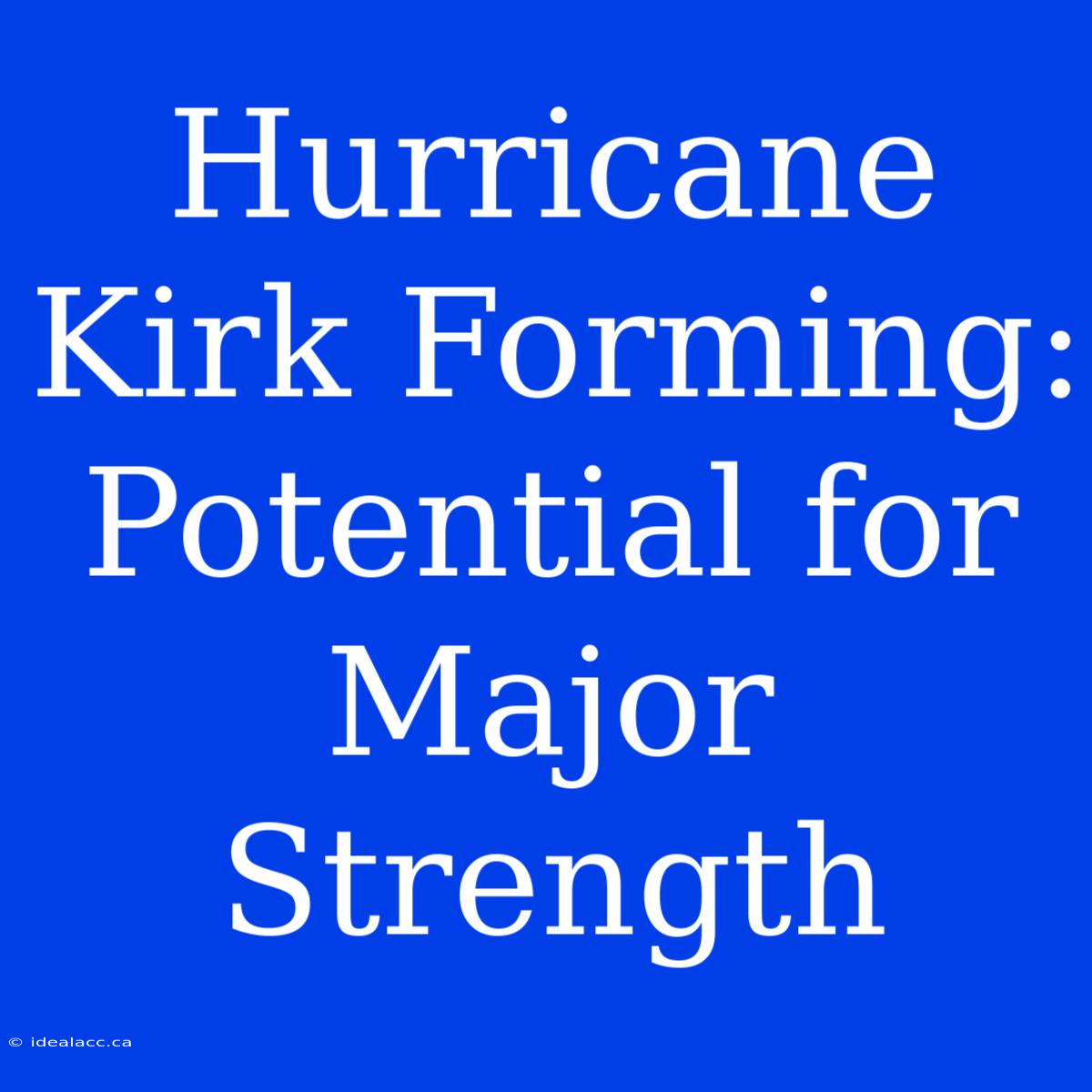Hurricane Kirk Forming: Potential for Major Strength - A Closer Look
Is Hurricane Kirk a Cause for Concern? Hurricane Kirk is rapidly intensifying and has the potential to become a major hurricane. This development has put many on high alert.
Editor Note: Hurricane Kirk formed on September 17, 2023. As of now, it poses a significant threat to parts of the Caribbean and the eastern United States.
Why this is important: Hurricanes are powerful storms that can cause widespread damage. Understanding the formation and potential impacts of hurricanes is crucial for preparedness and safety. This article will explore the key aspects of Hurricane Kirk's development, offering insight into its potential path and intensity.
Analysis: We have carefully analyzed weather data, forecasts, and expert opinions to provide a comprehensive overview of Hurricane Kirk. This guide will help you understand the current status of the storm, potential risks, and what to expect in the coming days.
Key Takeaways of Hurricane Kirk:
| Aspect | Description |
|---|---|
| Formation | Formed on September 17, 2023, in the central Atlantic. |
| Current Status | Rapidly intensifying, currently a Category 1 hurricane. |
| Potential Path | Predicted to move towards the Caribbean and potentially the eastern United States. |
| Intensity | Has the potential to reach major hurricane strength (Category 3 or higher). |
| Risks | High winds, heavy rainfall, coastal flooding, and potential for storm surge. |
Hurricane Kirk: A Deep Dive
Formation and Development:
Hurricane Kirk's formation is typical of tropical cyclones, originating from a cluster of thunderstorms in the Atlantic. Favorable atmospheric conditions, including warm ocean waters and low wind shear, allowed the system to organize and intensify rapidly.
Hurricane Kirk's Potential Path:
Forecasts suggest the hurricane is likely to move westward, approaching the Lesser Antilles later this week. Its exact path and intensity remain uncertain, and updates from the National Hurricane Center are crucial for accurate tracking.
Factors Influencing Hurricane Kirk's Intensity:
Several factors will determine Hurricane Kirk's eventual strength:
- Warm Ocean Waters: The warm ocean surface temperatures provide the necessary energy for the hurricane to strengthen.
- Wind Shear: Low wind shear allows the storm to organize and develop a well-defined eye, contributing to its intensity.
- Upper-Level Winds: The interaction of upper-level winds with the hurricane can either enhance or weaken the storm's structure.
Impact and Risks:
Hurricane Kirk poses a significant threat to areas in its path:
- High Winds: Strong winds can cause widespread damage to structures, power lines, and trees.
- Heavy Rainfall: Heavy rainfall can lead to flooding and landslides, particularly in mountainous regions.
- Coastal Flooding: Storm surge, a rise in sea level due to the hurricane's winds, can cause significant coastal flooding and erosion.
Hurricane Kirk: A Vital Reminder:
Hurricane Kirk serves as a reminder of the importance of preparedness and safety during hurricane season. It's crucial to stay informed through reliable sources like the National Hurricane Center, monitor weather updates, and have a hurricane preparedness plan in place.

